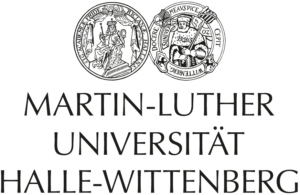Maria Camilles on “Investigation of effect of thermal denaturation on eye lens crystallin proteins using NMR spectroscopy”
and Muhammad Tariq on “Epitaxial Crystallization of Polyethylene on Molybdenum Disulfide Substrate via Prefreezing”
Abstracts
Investigation of effect of thermal denaturation on eye lens crystallin proteins using NMR spectroscopy
Maria Camilles
Crystallins are the major vision-related (i.e. refractive) proteins found in the eye lens. The mammalian lens consist of three classes of structural proteins, i.e α-, β- and γ-crystallins. The former also acts as chaperone. Commonly, proteins are subject to a continuous degradation and replacement process, but the eye lens proteins have to remain stable and soluble for a lifetime. Heat shock or other stressors can cause aggregation and lead to cataract, thus the major chaperone function is to prevent aggregation. The conventionally used techniques to study aggregation include observations by optical techniques applied mostly to dilute solutions. Here we demonstrate the use of 1H NMR relaxometry as an alternative to study the aggregation kinetics of crystalline proteins in highly concentrated protein solutions. From the rather different relaxation times of the globular aggregates and unfolded proteins we were be able to quantitatively characterize the protein native and aggregated state. We have studied the thermal denaturation and aggregation kinetics of γB-crystallin and αB-crystallin and our data demonstrates the qualitative changes associated with these proteins during thermal degradation.
Epitaxial Crystallization of Polyethylene on Molybdenum Disulfide Substrate via Prefreezing
Muhammad Tariq
The process of crystallization is most often initiated at an interface to a solid surface due to a decreased nucleation barrier. A solid surface can induce crystallization either by heterogeneous nucleation or by prefreezing, where these two processes are very different from each other from a thermodynamics point of view. Heterogeneous nucleation occurs below the bulk melting temperature (Tm) of the material at a certain supercooling while in the case of prefreezing, a crystalline layer is first formed at the solid surface well above the bulk Tm and thickness of such prefrozen layer increases and diverges upon approaching melt-solid coexistence. Prefreezing is expected for epitaxial or strongly attractive surfaces and can also occur in the case of polymer crystallization. A thorough investigation of prefreezing will be presented on a model system comprising of polyethylene (PE) on a molybdenum disulfide substrate. Using in-situ high temperature atomic force microscopy (AFM) measurements we show that the prefreezing layer of PE is stable in a temperature range up to about 47 K above the bulk Tm. Experimental results will be quantitatively explained on the basis of a phenomenological theory of prefreezing.
Location: Martin-Luther-Universität Halle-Wittenberg Von-Danckelmann-Platz 3, SR 1.04 06120 Halle (Saale) Time: 3.30pm-5.00pm Link to Google-Maps





One thought on “Doctoral students seminar (March 13, 2018)”